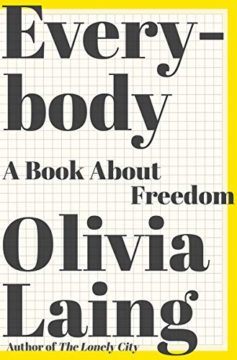Katy Waldman at The New Yorker:
 “Everybody” ’s central character is the Viennese psychoanalyst Wilhelm Reich, and perhaps it’s no accident that Laing presents him as a man in pieces. This is a formal description—fragments of Reich’s story are woven throughout—and a thematic one: the doctor, whom Laing praises as a “connector,” emerges as a teetering amalgam of brilliance, delusion, empathy, and prejudice. Born in 1897, Reich was one of Freud’s most famous protégés. He treated mostly working-class patients and believed that they were “carrying their past experiences around in their bodies, storing their emotional pain as a kind of tension,” which he called “character armor.” Therapy could help, as could Marxism, but what was really needed, Reich thought, was a revolution in sex, the liberatory potential of which had been warped by an extractive economic system. Reich and Freud fell out over their differing views on repression and Hitler—Freud wanted to remain neutral, while Reich urged resistance—and after Reich fled to the United States, in 1939, he grew paranoid and grandiose. He invented the orgone accumulator, a freestanding closet designed to collect orgasmic energy, and the Cloudbuster, the better to wage war on the weather. He eventually died in prison, after the Food and Drug Administration ordered him to stop selling orgone accumulators. (He didn’t.)
“Everybody” ’s central character is the Viennese psychoanalyst Wilhelm Reich, and perhaps it’s no accident that Laing presents him as a man in pieces. This is a formal description—fragments of Reich’s story are woven throughout—and a thematic one: the doctor, whom Laing praises as a “connector,” emerges as a teetering amalgam of brilliance, delusion, empathy, and prejudice. Born in 1897, Reich was one of Freud’s most famous protégés. He treated mostly working-class patients and believed that they were “carrying their past experiences around in their bodies, storing their emotional pain as a kind of tension,” which he called “character armor.” Therapy could help, as could Marxism, but what was really needed, Reich thought, was a revolution in sex, the liberatory potential of which had been warped by an extractive economic system. Reich and Freud fell out over their differing views on repression and Hitler—Freud wanted to remain neutral, while Reich urged resistance—and after Reich fled to the United States, in 1939, he grew paranoid and grandiose. He invented the orgone accumulator, a freestanding closet designed to collect orgasmic energy, and the Cloudbuster, the better to wage war on the weather. He eventually died in prison, after the Food and Drug Administration ordered him to stop selling orgone accumulators. (He didn’t.)
more here.
